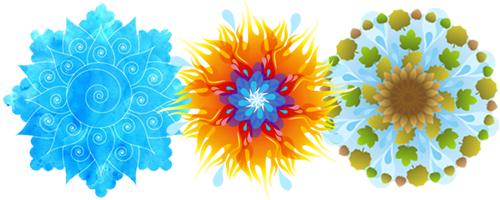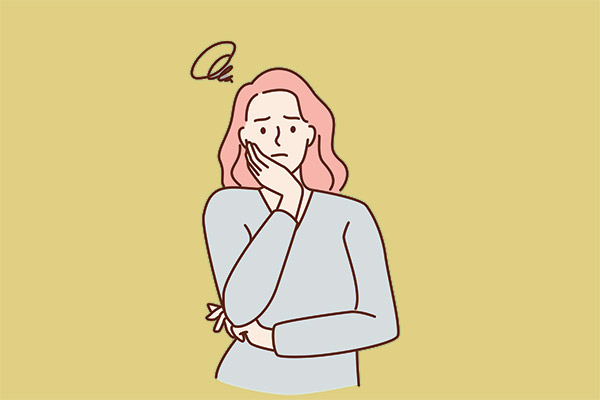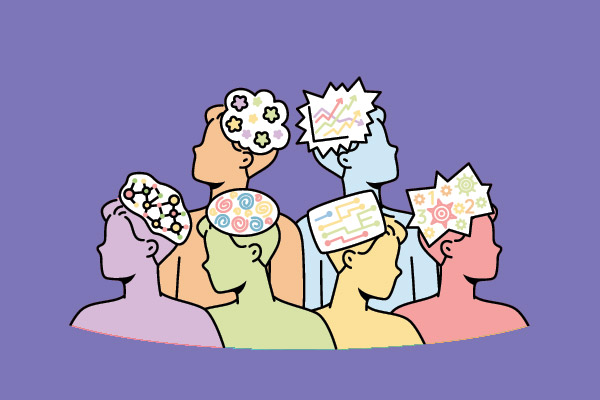Your Overall Element Score
When Stressed Out
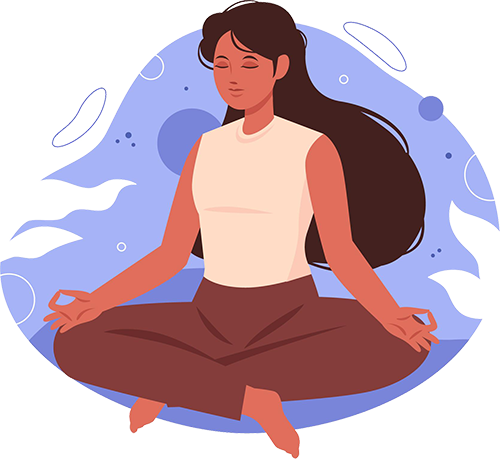
Your Mind Report
Mind Element Score
No Details Found
When Stressed Out

Tridoshic Body
You have the enviable abundant health and strength of a Tridoshic dominant person. Your physical body is a wondrous example of balanced energies the Vata, Pitta, and Kapha doshas. Let's take a closer look at how this comes to life in your physique.
Physically, your body is robust and strong. Your bones are thick, with your joints and ligaments providing exceptional mobility. Your skin is soft and thick, and your hair is thick and lustrous. Your body feels well-proportioned and sturdy, captivating others with its inviting glow.
Energetically, you are at the peak of health. As a Tridoshic dominant person, you enjoy a perfect balance between your Vata, pitta, and Kapha dosha energies. You naturally prioritize diet and lifestyle habits that support continued balance, such as regular meals at the same time each day, mindfulness practices, and a consistent sleep schedule.
In the physical realm too, you are guided by the Tridoshic principles. You stick to the Ayurvedic diet, eat mindfully, and practice physical activities that give you joy. You understand that each dosha has a unique reaction to different foods, exercises, and activities, so you do what makes your body feel best.
Your physical body radiates with the energy of equilibrium. From your head to your toes - every part of your body maintains harmony because you are attentive to its needs. Your Tridoshic dominant being is a thing of perpetual beauty, one that will become even more robust and healthy with each year that passes.
Tridoshic Body when stressed out

When it comes to stress, everybody reacts differently but for someone with a dominant Vata-Pitta-Kapha combination, their body may respond in certain ways. If you are this type of person and feeling stressed, it's important to know how your body might be reacting to the situation.
When you're feeling stressed, the pitta qualities of your body often respond first. A rise in pitta can lead to inflammation and heat, so you might start to experience shortness of breath or even a headache. Other symptoms of a pitta increase include heartburn or acid reflux, along with discomfort or aggravation in your abdominal area.
The Vata qualities may get disturbed next, as the stress and pressure cause fluctuations in what's often already a highly variable system. Signs of this can include feeling spaced out, having trouble sleeping and focusing, and feeling overwhelmed by things that were normally quite manageable. Anxiety and a feeling of being on edge are also common when someone in a Vata-Pitta-Kapha type becomes stressed.
Finally, Kapha can start to become unbalanced. The soothing energy of Kapha is usually the anchor that helps to keep everything else in check, but stress can weaken its impact leading to lethargy and apathy. Statements like "I don't care anymore" are often associated with a strong emotional reaction and are a sign that Kapha has become disturbed.
Ultimately, stress has a way of putting the body out of balance and the Vata-Pitta-Kapha person may feel the impact more acutely than others. But the good news is that once you know the signs to look out for, you can take measures to restore balance and come out on the other side in a better place.
Tridoshic Mind
You tend to be someone who is incredibly in-tune with the world around them and naturally balanced in all aspects of life. Your ability to think critically and objectively, assess situations and respond appropriately is a sign of your grounded, tridoshic dominant mind. You tend to be even-tempered, confident and understand the value of taking the time to reflect before making decisions. Your well-rounded approach to life is an amazing quality that makes you an asset in virtually any circumstance.
Tridoshic Mind when stressed out

When you- a Tridoshic dominant personality-find yourself under stress, it can be difficult to cope with. On top of the physical and emotional tolls it takes on the body, the mental impact of stress can affect the way you approach your day-to-day life.
Tridoshas are the three energetic principles of your body and mind that control individual characteristics. Vata contains the elements of air and ether; Pitta is composed of fire and water; and Kapha has the elements of water and earth. When one of these components is out of balance, it can leave you feeling unbalanced, anxious, and overwhelmed.
When a Tridoshic dominant personality is under stress, their mental state can become quite erratic. You may find it difficult to stay focused on a task or keep conversations going in a calm manner. You may find yourself rapidly shifting from one emotion to the next, from feeling agitated to despondent in the span of a few minutes. You may also struggle to connect with your friends and family.
It is important to recognize when stress has taken over your mental state and seek help. Try to identify activities that bring you joy, such as going for a walk, painting, or journaling. These activities are different for everyone, just like your individual Tridoshas. Taking a few moments of mindful breathing or relaxing to soothing music can help reset your mental state.
While coping with stress can seem daunting, remembering that you have a Tridoshic dominant personality makes it easier to understand the impact it has on your mental well-being. By taking the time to identify and address your stressors, you can start to reclaim your mental balance and live life in harmony with your body and mind.
Your Imbalance Report
Your Primary Imbalance Is
0
Your Imbalance Level:
Your Imbalance Symptoms Are:
None
Balance Excess Vata
According to your report, you have excess Vata.
Here are recommendations on how to restore balance.
Diet + Lifestyle
Diet + Lifestyle
- Enjoy naturally sweet, warm and nourishing foods like steamed vegetables and cooked grains.
- Incorporate warm herbal teas, like chamomile, cinnamon or ginger, into your daily routine.
- Get some exercise every day, like walking or gentle yoga, to help balance your Vata Dosha.
- Spend some time outdoors in nature for a daily dose of grounding and calming energy.
- Incorporate some calming self-care rituals like oil massage and Abhyanga into your routine.
- Meditate or practice mindfulness to stay connected and keep stress levels low.
- Get enough sleep and rest to allow your mind, body and spirit to relax and recharge.
Elimination Diet For Vata
Elimination Diet For Vata
Vata-type elimination diet involves eating, drinking, or eliminating certain foods or activities from your routine. It may be beneficial for those with a Vata-predominant constitution, as it helps to balance Vata-related digestive issues and disrupt the cycle of aggravation of Vata in the body. Potential issues of an elimination diet could include becoming too cold, dehydrated, or undernourished which can add to the Vata imbalance.
Pranayama
Pranayama
- Surya Bhedana Pranayama (Right Nostril Breathing): This pranayama increases energy and circulation and helps to counter the effects of Vata.
- Viloma Pranayama (Interrupted Breathing): This type of pranayama is excellent for calming the body and mind.
- Ujjayi Pranayama (Victorious Breath): This pranayama helps to reduce stress and can counter the effects of Vata.
- Nadi Sodhana Pranayama (Alternate Nostril Breathing): This pranayama can reduce anxiety and balance the mind and body.
- Kapalabhati Pranayama (Skull Shining Breath): This pranayama helps to increase focus and clarity of the mind.
- Bhastrika Pranayama (Bellows Breath): This pranayama helps to improve circulation and warm the body, which can reduce Vata.
- Anuloma Viloma Pranayama (Alternate Nostril Breathing): This pranayama is excellent for calming the body and promoting harmony between body and mind.
Guidelines
Guidelines
- If you need to balance Vata, a fat-free diet is not for you. Cook foods with a little ghee (clarified butter) or include some olive oil in your diet every day. Olive oil cannot be heated to high temperatures without destroying its healing value, so drizzle olive oil over fresh soft flatbreads, cooked grains, or warm vegetable dishes. Ghee can be heated to high temperatures without affecting its nourishing, and healing qualities, so use ghee to sauté vegetables, spices, or other foods. Avoid too many dry foods such as crackers, dry cold cereal, and the like.
- Cooked foods, served hot or warm, are ideal for balancing Vata. Pureed soups, cooked fruit, hot cereal, rice pudding, and hot nourishing beverages such as nut milk or warm milk are excellent "comfort" foods and help pacify aggravated Vata. Avoid or minimize raw foods such as salads and raw sprouts.
- The three ayurvedic tastes that help balance Vata are sweet, sour, and salty, so include more of these tastes in your daily diet. Milk, citrus fruits, dried fruit, or salted toasted sunflower or pumpkin seeds make good snack choices. Eat less of the bitter, pungent, and astringent tastes.
- Nuts are wonderful Vata-pacifiers. Soak ten almonds overnight. Blanch and eat in the early morning for a healthy burst of energy. Walnuts, hazelnuts, and cashews make good Vata- pacifying snacks.
- Carrots, asparagus, tender leafy greens, beets, sweet potatoes, and summer squash such as zucchini and lauki squash are the best vegetable choices. They become more digestible when chopped and cooked with Vata-pacifying spices. Vegetables can be combined with grains or mung beans for satisfying one-dish meals. Avoid nightshades and larger beans.
- Basmati rice is ideal for balancing Vata. Cook it with a little salt and ghee for added flavor. Wheat is also good-fresh flatbreads made with whole wheat flour (called atta or chapatti flour and available at Indian grocery stores) and drizzled with a little melted ghee combine well with cooked vegetables or Vata-balancing chutneys.
- Most spices are warming and enhance digestion, so cook with a combination of spices that appeals to your taste buds and is appropriate for the dish you are making. Ayurvedic spices such as small quantities of turmeric, cumin, coriander, dried ginger, black pepper, and saffron offer flavor, aroma, and healing wisdom.
- Drink lots of warm water throughout the day.
- Vata types are the only dosha where meat and fish in the diet can be of great benefit, especially to bring balance to high Vata types. Red meat of all types is beneficial. However, chicken and eggs can be enough to provide grounding support. The issue is that you may carry stress over from a dead animal, so making sure you eat pasture-raised animals that are free from chemicals and hormones is important to keep both mind and body healthy.
Factors That Aggravate Vata
Factors That Aggravate Vata
- Stresses, even minor
- Changes, even positive
- Travel, especially by air
- Sensory overstimulation
- Being overscheduled
- Skipping meals
- Eating too many raw, cold foods
- Insufficient sleep
- Poor bedtime routine
- Erratic work hours
- Changing of the seasons
- Cold, dry climate
- Failure to express feelings of grief, loss, or fear

Food Choices
Food Choices
Grains: Rice, wheat, quinoa, oats, and amaranth, all cooked until tender. A low-grain diet is recommended for this dosha.
Vegetables: Asparagus, tender greens, carrots, peas, green beans, white daikon, zucchini, lauki squash, parsnips, sweet potatoes, all cooked.
Fruits: Avocado, pineapple, papaya, peaches, plums, grapes, mangoes, oranges, cherries, all kinds of berries, limes, and lemons, apples if stewed, coconut, fresh figs, raisins (soaked)
Lentils: Mung beans, urad dhal, mung dhal, masoor dhal, toor daal, and red lentils, all cooked until butter-soft
Dairy: Whole milk, cream, butter, fresh yogurt (cooked into foods), lassi, cottage cheese, fresh paneer cheese.
Oils: Ghee, olive oil, sesame oil, cold-pressed nut oils such as walnut.
Herbs: Fresh ginger root, cilantro, curry leaves, parsley, fresh basil, fresh fennel, mint
Nuts and Seeds: Almonds (soaked and blanched), cashews, walnuts (soaked), pistachios, hazelnuts, pecans (soaked), pine nuts, sesame seeds, sunflower seeds, pumpkin seeds.
Spices: Ajwain, dried ginger, asafetida (hing) in small quantities, fenugreek, turmeric, cumin, clove, cardamom, coriander, fennel, black pepper, basil, Chinese cinnamon, nutmeg, mustard seed, mint, rosemary, thyme, lemon and orange zest, oregano, rock salt or sea salt, black salt, dried mango powder, pomegranate seeds or powder.
Other: Rice milk, soy milk, poppy seeds, sucanat, turbinado sugar, raw honey, and tofu in moderation (diced small and cooked with spices)
Meat/Fish: Vata is the only dosha type where meat and fish can be beneficial for strong Vata types. It can be grounding and nourishing for strongly dominant Vata types. However, you must stick to pasture-raised organic meat. It is also advisable to eat nose-to-tail (including organ meats) for a healthier choice of meat. Bone broth is also a great source of grounding nourishment, especially collagen which is useful for thin-framed Vata types you are more prone to bone and joint issues.
Balance Excess Pitta
According to your report, you have excess Pitta.
Here are recommendations on how to restore balance.
Diet + Lifestyle
Diet + Lifestyle
- Spend some time in nature: Take a gentle walk in nature or sit and enjoy the sunshine.
- Stay hydrated: Drink plenty of water throughout the day, and opt for warming and nourishing liquids like herbal tea.
- Avoid overheating: Stay away from aggravating spicy and sour foods, alcohol, and smoking.
- Take cooling or calming herbs: Gotu kola, Shatavari, hibiscus, licorice root tea, and chamomile can help to support a balanced pitta.
- Practice mindful activities: Take a few moments each day to meditate or jot down your thoughts in a journal.
- Get enough sleep: Aim for 7-9 hours of restful sleep every night.
- Take breaks throughout the day: Schedule some downtime for yourself, and take a few moments to catch your breath.
Elimination Diet For Pitta
Elimination Diet For Pitta
Pitta-type elimination diet involves eliminating certain foods or activities that can aggravate Pitta dosha and focusing more on cooling, calming foods and activities that help to support balance. An elimination diet in this way can help to bring down the heat and intensity of Pitta in the body while boosting mental clarity and digestion. Potential issues of elimination diet could come from overly restrictive dieting, or from not enough rest or nourishment, which can disrupt the balance of Pitta.
Pranayama
Pranayama
- Anuloma Viloma Pranayama (alternate nostril breathing): This technique helps maintain the balance between the left and right sides of your brain, reducing pitta and creating mental clarity.
- Siddhasana (seated pose): This powerful posture helps you stay connected to the Earth and its grounding energy, reducing pitta and promoting relaxation.
- Ujjayi Pranayama (victorious breath): This calming practice helps to soothe agitation, creating a relaxing and harmonious environment in your body.
- Nadi Shodhana Pranayama (Alternate Nostril Breath): This technique helps to bring balance to your nervous system and creates deep relaxation, reducing pitta in your body.
- Bhramari Pranayama (Bee Breath): This practice helps you release stored tension in your body, which is beneficial for reducing pitta.
- Kapalbhati Pranayama (Skull Shining Breath): This invigorating practice helps to clear the nasal passages and energize your body, reducing pitta.
- Shitali Pranayama (Cooling Breath): This cooling practice helps to reduce heat and inflammation in the body, which is often associated with an imbalance in pitta.
These pranayama techniques are powerful tools to help keep pitta in check and bring you back into balance. Practicing pranayama regularly can help keep a harmonious inner balance of your mind and body.
Guidelines
Guidelines
- If you need to balance Pitta, choose ghee, in moderate quantities, as your cooking medium. Ghee, according to the ancient ayurvedic texts, is cooling for both mind and body. Ghee can be heated to high temperatures without affecting its nourishing, and healing qualities, so use ghee to sauté vegetables, spices, or other foods.
- Cooling foods are wonderful for balancing Pitta dosha. Sweet juicy fruits, especially pears, can cool a fiery Pitta quickly. Milk, sweet rice pudding, coconut and coconut juice, and milkshakes made with ripe mangoes and almonds or dates are examples of soothing Pitta-pacifying foods.
- The three ayurvedic tastes that help balance Pitta are sweet, bitter, and astringent, so include more of these tastes in your daily diet. Milk, fully ripe sweet fruits, and soaked and blanched almonds make good snack choices. Eat less of the salty, pungent, and sour tastes.
- Dry cereal, crackers, granola and cereal bars, and rice cakes balance the liquid nature of Pitta dosha and can be eaten any time hunger pangs strike during the day. Although a low-grain diet is preferable for all dosha types, pitta has the best digestive capacity to handle them.
- Carrots, asparagus, bitter leafy greens, fennel, cruciferous vegetables such as broccoli, cauliflower, and Brussels sprouts, green beans, and bitter gourd (in very small quantities) are good vegetable choices. They become more digestible when chopped and cooked with Pitta- pacifying spices. Vegetables can be combined with grains or mung beans for satisfying one-dish meals. Avoid nightshades.
- Basmati rice is excellent for balancing Pitta. Wheat is also good--fresh flatbreads made with whole-wheat flour (called atta or chapatti flour and available at Indian grocery stores) combine well with cooked vegetables or Pitta-balancing chutneys. Oats and amaranth are other Pitta-balancing grains.
- Choose spices that are not too heating or pungent. Ayurvedic spices such as small quantities of turmeric, cumin, coriander, cinnamon, cardamom, and fennel offer flavor, aroma, and healing wisdom.
- Drink sweet lassi with lunch to help enhance digestion and cool, not ice-cold, water to quench thirst.
Factors That Aggravate Pitta
Factors That Aggravate Pitta
- Ongoing or intense stress
- Pushing too hard at work
- Insufficient exercise
- Unrealistically high expectations of self or others
- Excessive stimulants
- Eating hot, spicy, or greasy foods
- Heat and humidity

Food Choices
Food Choices
The following list of suggested foods is by no means all-inclusive but offers starting guidelines if you are new to ayurvedic dietary principles. We will add to this list regularly, so please check back often!
Grains: Rice, wheat, barley, oats, amaranth, sago, all cooked until tender
Vegetables: Asparagus, tender and bitter greens, bitter gourd, carrots, fennel, peas, green beans, zucchini, lauki squash, artichoke, parsnips, okra, celery, Brussels sprouts, broccoli, cauliflower, beets, sweet potatoes, all cooked, small quantities of raw lettuce, carrots or cucumber.
Fruits: Avocado, pineapple, peaches, plums, grapes, mangoes, melons, pears, pomegranates, cherries, all kinds of berries, apples, coconut, dates, fresh and dried figs, raisins (soaked), all ripe and sweet.
Lentils: Mung beans, mung dhal, red or brown lentils, small portions of garbanzos, lima beans, and black beans, all cooked until butter-soft.
Dairy: Whole milk, cream, butter, fresh yogurt (cooked into foods), lassi, cottage cheese, fresh paneer cheese.
Oils: Ghee, olive oil, walnut oil.
Herbs: Cilantro, curry leaves, parsley, fresh basil, fresh fennel, fresh mint.
Nuts and Seeds: Almonds (soaked and blanched), sunflower seeds, pumpkin seeds.
Spices: Turmeric, cumin, cardamom, coriander, fennel, small quantities of black pepper, Chinese cinnamon, mint, saffron, dill, sweet orange zest.
Other: Rice milk, soy milk, sucanat, turbinado sugar, date sugar, and tofu in moderation (diced small and cooked with spices)
Balance Excess Kapha
According to your report, you have excess Kapha.
Here are recommendations on how to restore balance.
Diet + Lifestyle
Diet + Lifestyle
- Eat a diet that is light and mostly made up of fresh fruits and vegetables. Avoid fried and heavy foods, as they can increase Kapha dosha.
- Engage in regular daily physical activities. Doing sports like running, cycling, yoga or aerobics can help to balance Kapha dosha.
- Take a brisk walk after meals, as this will help to aid digestion and benefit Kapha dosha.
- Spend time in the sunshine to help increase energy levels and reduce Kapha dosha.
- Avoid oversleeping and try to maintain a regular sleep schedule.
- Implement some Nasya treatment to help clear the nasal passages and reduce Kapha dosha.
- Use aromatherapy to reduce Kapha dosha, as fragrances like jasmine and citrus help clear the mind and reduce heaviness.
- Spend time with friends and family to help bring a sense of joy and contentment.
- Try to laugh more, as this will help reduce any stress and increase positivity.
- Listen to music that uplifts the soul and inspires you.
Elimination Diet For Kapha
Elimination Diet For Kapha
Kapha-type elimination diet involves reducing the amount of sweet and heavy foods and increasing the amount of light, dry and warm foods. This type of elimination diet may be beneficial for those with a Kapha-dominant constitution, as it helps to regulate Kapha-related congestion or stagnation in the body. Potential issues of elimination diet for a Kapha-person could become from not getting enough rest and support, as Kapha individuals are often energized by rest and nourishment.
Pranayama
Pranayama
- Ujjai Pranayama: This pranayama technique helps to reduce Kapha by stimulating the body's natural fire element. Inhale deeply and exhale slowly to energize and invigorate your body.
- Bhastrika Pranayama: This breath technique can help to reduce Kapha by stimulating the digestive system. Sit comfortably and take forceful and deep breaths, stressing the exhalation.
- Anulom Vilom Pranayama: This technique helps to balance the air element inside the body, which helps to reduce Kapha. Inhale and exhale through alternate nostrils for 15 minutes every morning.
- Kapalabhati Pranayama: This breathwork helps to quickly reduce Kapha. This powerful technique can help to remove toxins while energizing your system.
- Surya Bheda Pranayama: This technique helps to balance energy levels. Take deep inhalations on the right side of your nostril and exhale through the right.
- Sheetali Pranayama: This cooling breath technique can help to reduce excess Kapha. Inhale deeply through your mouth while rolling your tongue into a tube and exhale out of the nostrils.
- Bhramari Pranayama: This is a great pranayama to balance Kapha. Take deep and slow breaths while humming like a bee.
- Nadi Shodana Pranayama: This technique can help to reduce Kapha by balancing the energy channels of the body. Take deep breaths and switch between your nostrils.
- Bhramari Pranayama: This calming breath helps to reduce stress and bring balance to Kapha. Take deep and slow breaths while humming like a bee.
Guidelines
Guidelines
- If you need to balance Kapha, choose ghee, in very small quantities, as your cooking medium. Ghee can be heated to high temperatures without affecting its nourishing, healing qualities, so use ghee to sauté vegetables, spices or other foods. Steaming foods and then adding a mixture of spices sautéed in very little ghee is best. In general, avoid too many oily foods.
- Light, warming foods help balance Kapha. Clear vegetable soups with beans and diced vegetables, stews made with Kapha-balancing vegetables, bean casseroles, dhal soups and light grain/vegetable combinations are ideal for balancing Kapha, especially when combined with Kapha-balancing spices. Stay away from too much salt and instead infuse dishes with fresh herbs and spices for flavor.
- The three ayurvedic tastes that help balance Kapha are pungent, bitter and astringent, so include more of these tastes in your daily diet. Apples, and garbanzo beans cooked with Kapha- balancing spices or steamed broccoli or cauliflower with a light olive oil and spice mixture make healthy Kapha-pacifying snacks. Eat less of the salty, sweet and sour tastes.
- Dry cereal, salt-free crackers and rice cakes balance the liquid nature of Kapha dosha and make good snacks. However, eat snacks in moderation if you are trying to balance Kapha, and avoid sugary snacks. Honey in small quantities is the recommended sweetener.
- Carrots, asparagus, okra, bitter leafy greens, cruciferous vegetables such as broccoli, cauliflower, and Brussels sprouts, daikon radish and bitter gourd are good vegetable choices. They become more digestible when chopped and cooked with Kapha-pacifying spices.
- Vegetables can be combined with lighter grains or mung beans for satisfying one-dish meals. Avoid nightshades. Fresh green chili peppers and fresh ginger root add flavor while balancing Kapha.
- Choose lighter whole grains, and eat grains in moderation. Barley, buckwheat, millet and couscous are good choices. If you choose heavier grains, such as rice or wheat, eat very small quantities.
- Zesty warming spices are wonderful for balancing Kapha. Ayurvedic spices such as turmeric, cumin, coriander, cayenne, black pepper, dried ginger, asafetida (hing), cloves and fenugreek offer flavor, aroma and healing wisdom.
- Drink lassi infused with digestion-enhancing spices and herbs with lunch and lots of warm water throughout the day to help flush toxins from the body.
Factors That Aggravate Kapha
Factors That Aggravate Kapha
- Prolonged stress
- Dull job
- Lifeless marriage
- Lack of movement
- Excess sleep
- Overeating
- Too much sweet, salty, or fatty foods
- Taking sedatives, like alcohol or sleeping pills
- Relationships with excessive dependency and clinging
- Too little contact with others
- Cold and damp weather
- Lack of sunshine

Food Choices
Food Choices
The following list of suggested foods is by no means all-inclusive but offers starting guidelines if you are new to ayurvedic dietary principles. We will add to this list regularly, so please check back often!
Grains: Buckwheat, quinoa, barley, millet, oats, amaranth, sago, small portions of Basmati rice, all cooked until tender
Vegetables: Asparagus, all kinds of greens, bitter gourd, green beans, lauki squash, artichoke, celery, Brussels sprouts, broccoli, cauliflower, beets, kohlrabi, daikon, radish, cabbage, all Cooked
Fruits: Apricots, prunes, peaches, pears, cherries, berries, apples, lemons, limes, pomegranates, dried figs, raisins
Lentils: Mung beans, mung dhal, toor dhal, red or brown lentils, small portions of garbanzos, lima beans, and black beans, all cooked until butter-soft
Dairy: Whole milk diluted with water, lassi, small portions of cottage cheese or fresh paneer cheese.
Oils: Small portions of ghee and olive oil
Herbs: Cilantro, curry leaves, parsley, fresh basil, fresh mint, fresh oregano, fresh thyme, sage, neem leaves
Nuts and Seeds: Sunflower seeds, pumpkin seeds
Spices: Turmeric, cumin, cardamom, coriander, fennel, dried ginger, Chinese cinnamon, black pepper, Chinese cinnamon, mint, saffron, dill, lime zest, nutmeg, cayenne, fenugreek, mustard seed, oregano, marjoram, thyme, rosemary, paprika, mace, cloves
Other: Raw honey in moderation, unsalted unbuttered popcorn, crackers in moderation, cooked tofu in small quantities (diced small and cooked with spices)
Toxicity
Your Toxicity Symptoms:
Your Toxicity Level:
Looks like you've got toxicity going on, but the good news is that we've got some recommendations to help you restore balance. We suggest following some guidelines and a tailored fast and cleanse for your element type. And the best part? Our SOMA Breath transformational coaches are experts at delivering this program just for you. So, let's get started on feeling healthier and happier!
Golden Rules For All Elements
- Chew your food well, till it's liquid mashed in your mouth before swallowing. Count to 30 chews before swallowing. Remember your stomach does not have teeth!
- Eat what you love, but stick to a no factory diet, having a pure and balanced diet as much as possible. You will be naturally drawn to certain tastes and foods based on your dosha type.
- Eating till you are 80% full, and only when hungry, and before 8 pm is usually beneficial for every dosha type.
Let SOMA Breath Be Your Warm And Friendly Guide To A Healthy Balanced Life
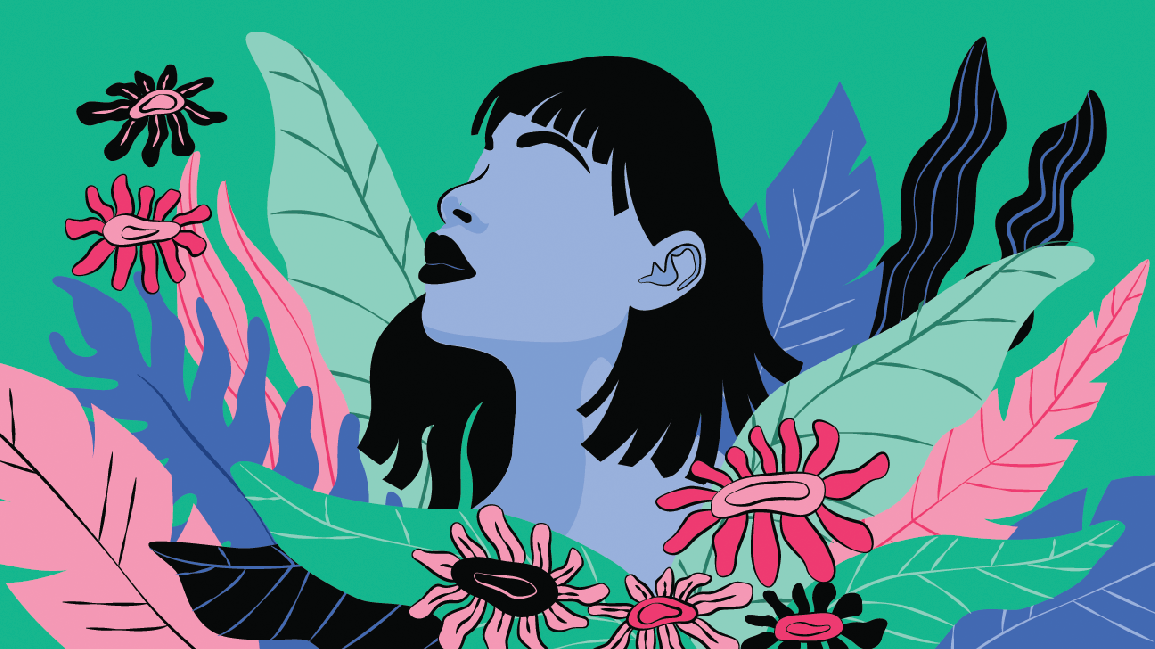
With over 9573+ students enrolled in our programs and over 1979+ instructors, we have discovered the number one thing most people are looking for is peace of mind.
It doesn't matter if you are already successful and seem to have it all, or suffering from a health issue, or struggling to pay the bills, or going through a divorce, the question on most people's mind is 'how do I get peace of mind?
Interestingly one of the main aspirations of yoga is 'chitta vritti nirodha' which translates to 'bring tranquility to mind' and yoga is one of the key methods of restoring balance in traditional ayurveda.
SOMA Breath is based on the anxiety wisdom of traditional ayurveda, yoga however combined with modern science and proprietary music and brainwave technology.
When you find your element and live by it, you bring peace to your mind, and your life effortlessly flows.
A Soma Breath transformational coach is trained to help you do exactly that by identifying your predominant element, what needs to be brought back to balance and then creating a road map to discovering and getting exactly what you want.
Go deeper with an instructor
Find A Transformational Coach Near You
A certified SOMA Breath Transformational Coach will be able to discover exactly what your element is, and teach you how to maintain and restore balance by creating a customized lifestyle plan just for you.

Recommended Courses

Transformational Course: 21 Day Awakening Journey
Now that you have just discovered your element and what you need to rebalance its time to put this into action. This is our most popular course, currently being studied by Cambridge University that helps you do this and much more.
Led by Soma Breath Transformational Coaches in a group learning experience or done as a self study course, using our proven framework that combines our breathwork and transformational techniques into one step by step course.
Completely transform your life in 21 days, and go away with new skills that will help you stay in balance for life.
Somabreath membership
Make blissfulness your new normal with our exclusive membership program. It's like having your own SOMA Breath spa at a push of a button.. You can retreat, revive, and renew your body and mind within minutes-no matter where you are or how you feel!
You can also connect to a tribe of incredible likeminded people all with the same values, interests and aspirations, that will make you feel like this is home.

Become an instructor
Become a Transformational Coach
Make blissfulness your new normal with our exclusive membership program. It's like having your own SOMA Breath spa at a push of a button.. You can retreat, revive, and renew your body and mind within minutes-no matter where you are or how you feel!
You can also connect to a tribe of incredible likeminded people all with the same values, interests and aspirations, that will make you feel like this is home.

Scientific Sources:
https://www.ncbi.nlm.nih.gov/pmc/articles/PMC4012357/
Ayurvedic Healing - Dr David Frawley
Medical Understanding Of Yoga - Dr Prakash Malshe
Scientific Sources:
Ayurvedic Healing - Dr David Frawley
Medical Understanding Of Yoga - Dr Prakash Malshe

